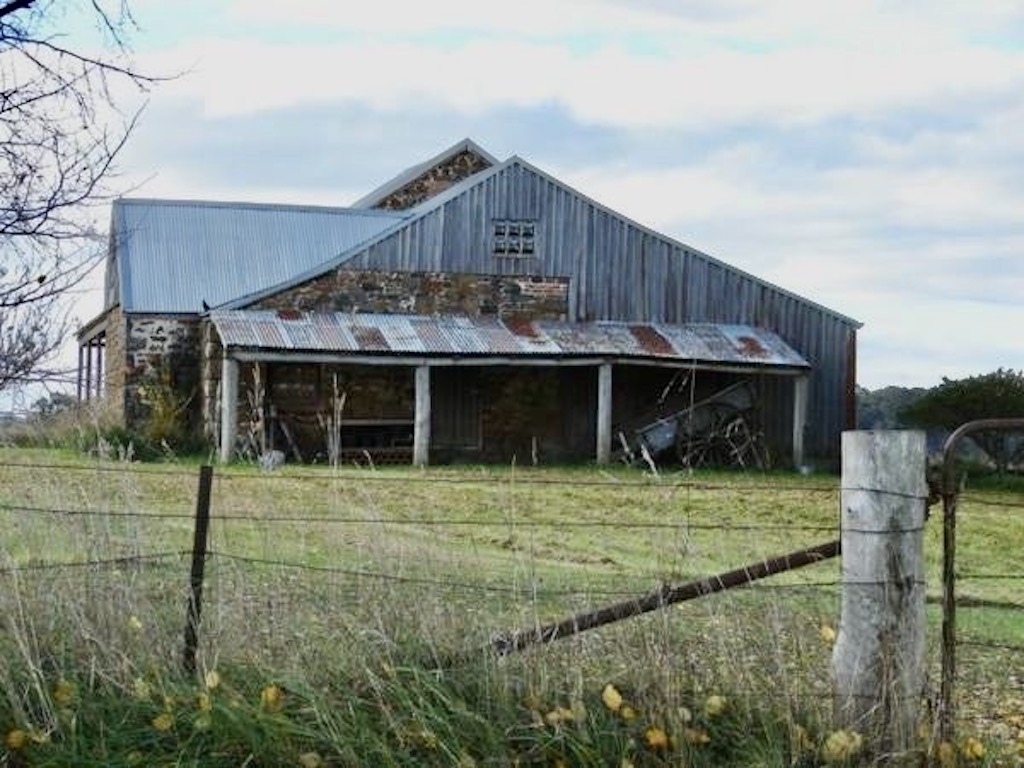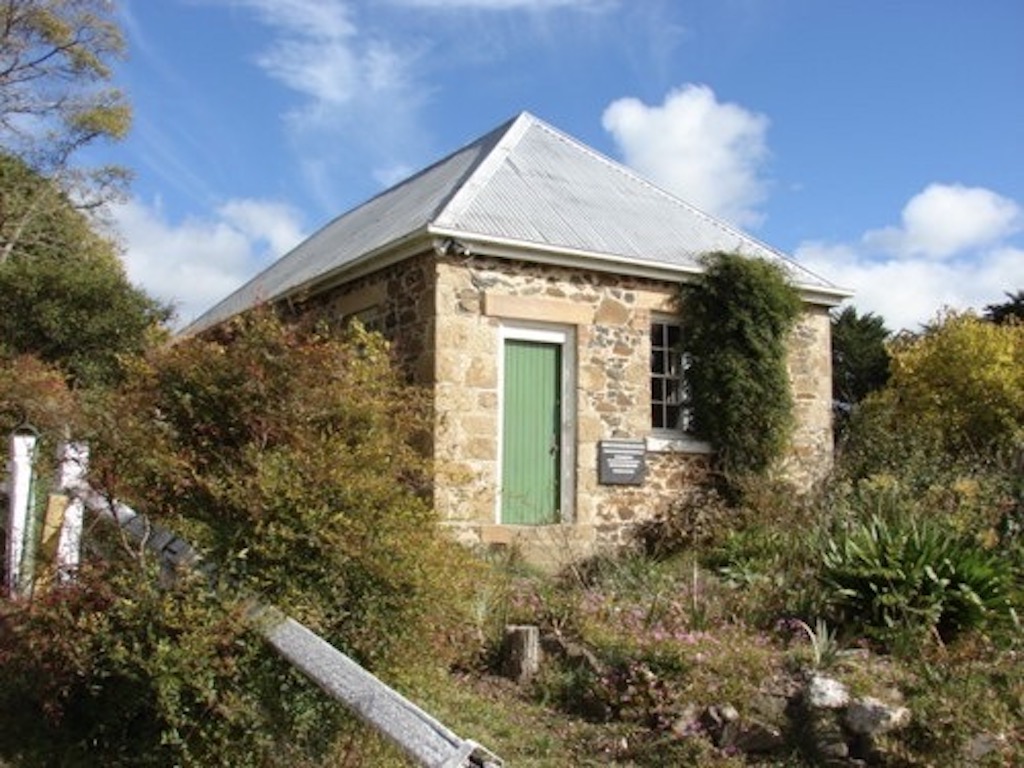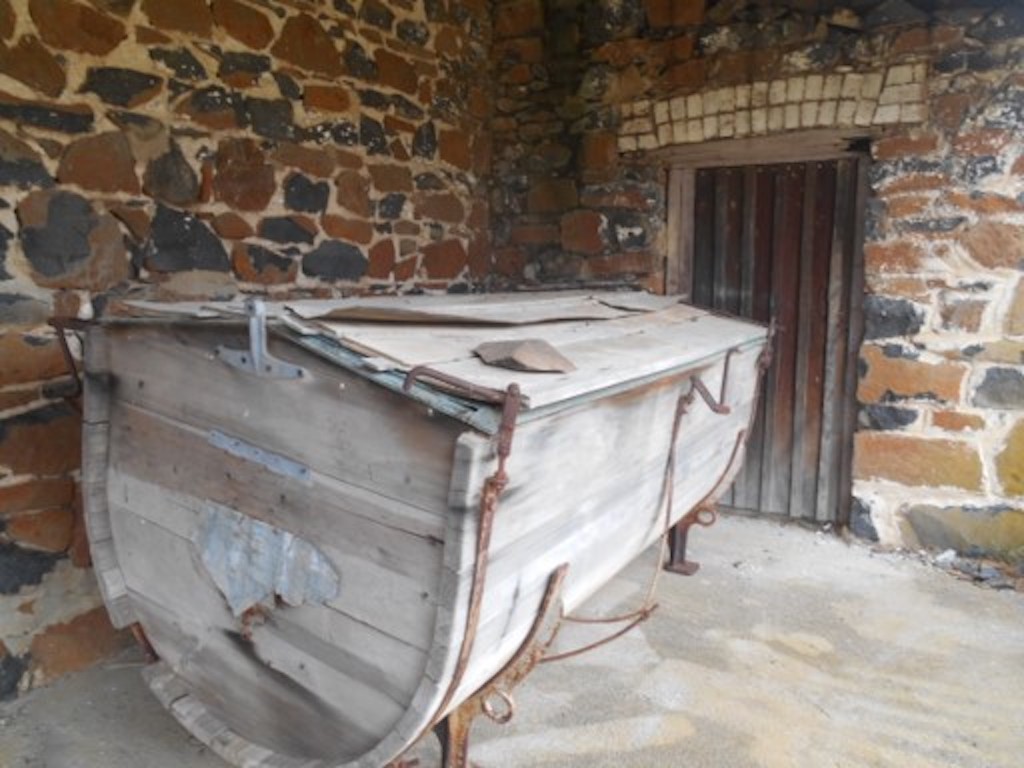
The old butter factory at Kialla, which provided a new source of income for farmers during its short history. Photo: Julie Appleton.
Researching her ancestors, Julie Appleton set off from Sydney in 2011 with her husband Michael, stocked up with local information in Crookwell and headed off to Kialla, a rural settlement just south of the town.
More than a century earlier 500 people had congregated at Kialla for the opening of a butter factory. A bottle of milk was smashed over a separator to christen the venture much like champagne is splashed over a new ship.
But Julie was more interested in three brothers-in-law, all farmhands who had arrived years earlier than the factory’s opening to establish homes and farms on small allotments. The butter factory is worth mentioning though, to show the enterprise, progress and co-operation that shaped the countryside in the late 1800s.
Julie didn’t know what to expect at Kialla in 2011. On arrival, she realised her earlier hopes of buying a cup of coffee there were well wide of the mark.
“It’s strange. They talk about some areas being in your DNA, I just felt at ease there,” she said, reflecting on her first impressions. “You feel very much at home.”
She said Kialla’s hills and valleys were similar to the countryside around a rural village in Etchingham, Sussex, from where her great-great-grandfather Thomas Haywood had migrated to Australia.
Thomas had first settled south of Wollongong and married Eliza Gillespie in 1955. Two other couples married there as well, Henry Rixon and his wife Mary Gillespie, and James Gillespie and his wife Frances Hayward. So, as well as being friends, the three couples were related by marriage. The brothers-in-law all decided to move further inland from the Illawarra and headed to the Gullen area, as it was known until being renamed Kialla.
“So they left their wives down in Wollongong and took up land in the Kialla area, bringing the families up when there were basic houses to live in,” Julie said. “I shudder to think just what life was like – except for the beauty of the highlands,” she said.
In 2011, after two hours exploring and checking a parish map of County Argyle Julie and Michael found her ancestors’ home on a small acreage plot and a portion of Thomas Hayward’s land which had been donated for the school. “With 11 children that was not a hard decision to make, they didn’t have far to walk,” Julie said. The first school had been a draughty slab hut, later replaced with a small school room built of local stone and a house for the teacher.

Kialla’s stone school would have remained empty during harvest time, when every child in the district helped with the harvest. Photo: Julie Appleton.
Julie had also written to five long-standing families in the Crookwell district which eventually led to a call from Duncan Gay, and contact with her distant relation Jim Gay and his wife Margaret who offered to take Julie on a tour of Kialla. They finally met in 2015.
“I thought we would drive past these properties. Well, we didn’t; we knocked on the door and if they were home, they would say, ‘Come in’, and it was fabulous,” Julie said.
Jim was born at Kialla in 1939. His parents Walter and Ida had 12 cows and sent their cream first to the Kialla butter factory, then the Crookwell butter factory. They also ran the Kialla Post Office from their home. A small shop had once traded across the road but closed soon after Jim was born.
Julie took several photos around the district, including of old homesteads and the Kialla butter factory.
Newspapers of the day record the main section of the factory was made of rubble stone with 12-feet high and 18-inch-thick walls and a cement floor, and had a butter room, separator room and wash-up room with hot and cold water, and a jet steamer.
By 1902 the co-operative was exporting butter to London, but this side of the business had recorded a small loss, counterbalanced by an improved local market.

The original butter churn from Kialla Dairy. Photo: Julie Appleton.
In 1924 talks were held to combine resources of Kialla and Cotta Walla butter factories, to open a central factory that would meet government standards. A suggestion was put forward to open a central factory, according to newspaper records. But two years later in 1926 a wind-up notice appeared for the Kialla butter factory in the Government Gazette.
Unravelling other parts of the landscape Julie was able to find significant homesteads and their remnants. She met contemporary occupants of some of the old homes and felt the artefacts of those pioneering days. Reminiscences from Kialla’s struggles to establish a school, mail service and impact of progress are not rare but a person’s experience uncovering their family’s story out there in the quiet, gentle hills is unique.







